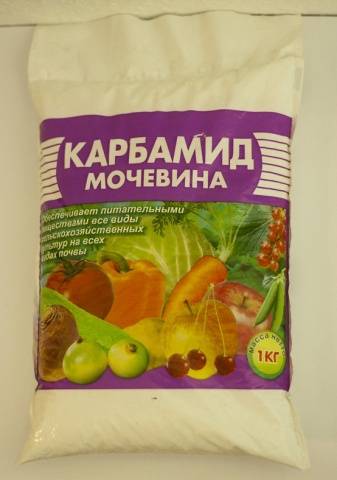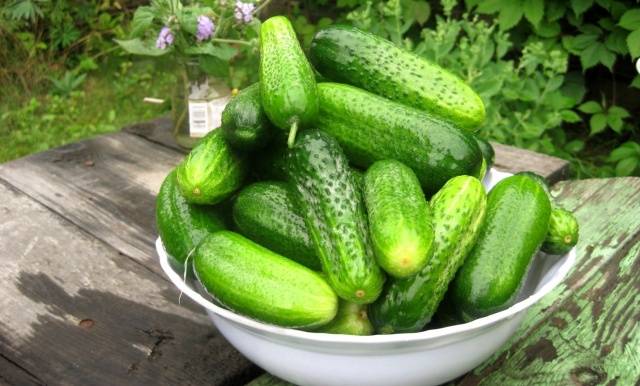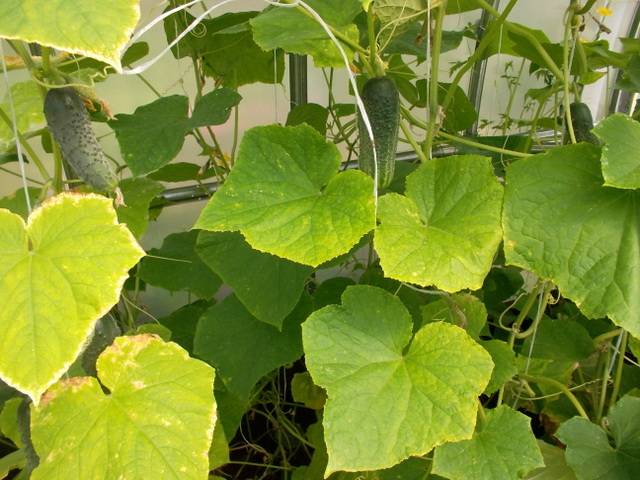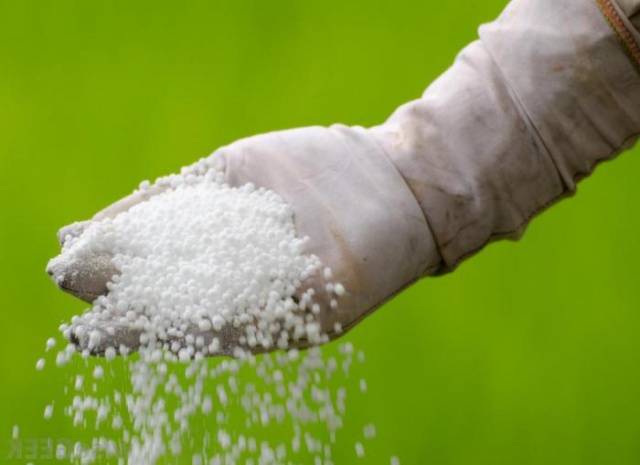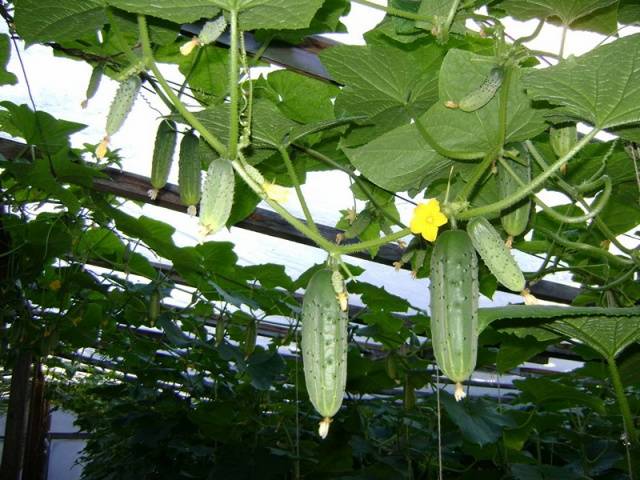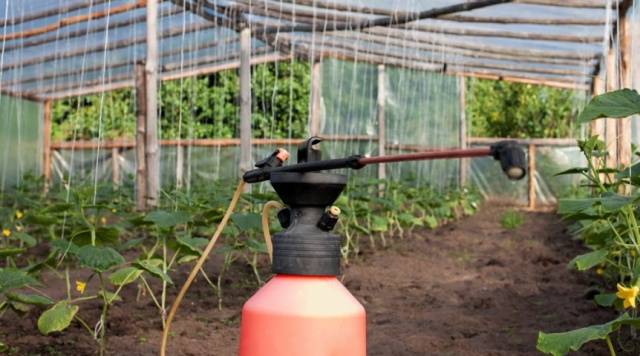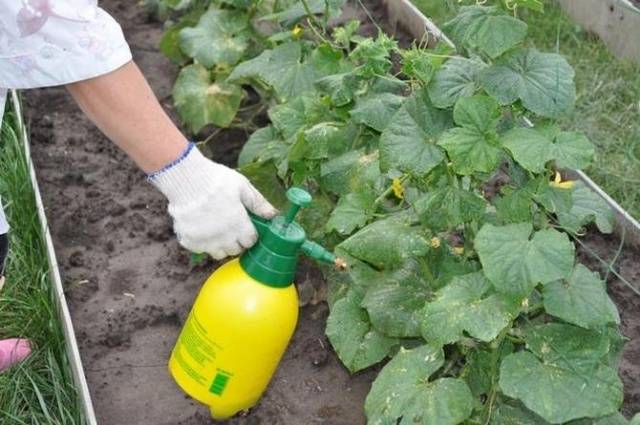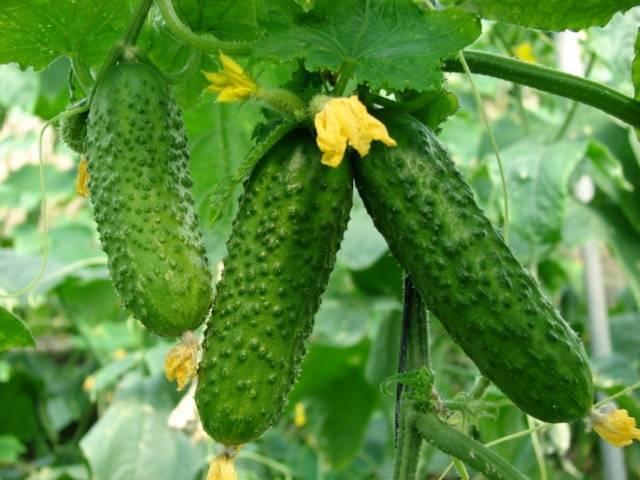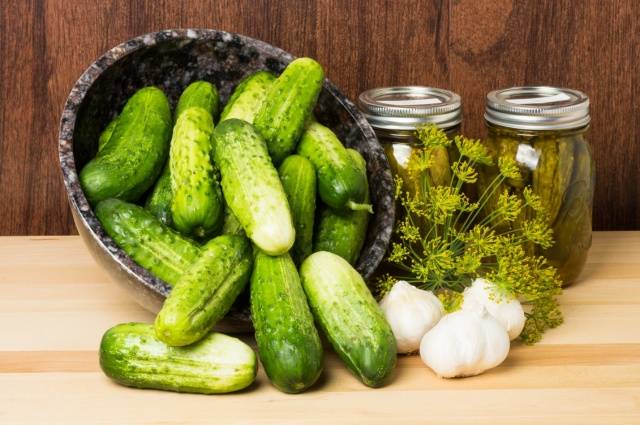Content
Urea or urea is a nitrogen fertilizer. The substance was first isolated from urine and identified at the end of the 18th century, and at the beginning of the 19th century, chemist Friedrich Wöhler synthesized it from an inorganic substance. A significant event was the beginning of organic chemistry as a science.
Urea looks like colorless, odorless crystals. As a fertilizer it is produced more often in granular form, the substance is readily soluble in water.
Urea is known to all gardeners without exception. Efficiency has been proven by more than one generation of agronomists. Not being a chemist, most people know that cucumbers need nitrogen for full vegetation. Urea contains almost 47% nitrogen. Fertilizer can be applied as the main type of top dressing, and in combination with other types of fertilizers and dressings.
Fertilizer from domestic producers is affordable. It is produced in granular form or in the form of tablets, which is very convenient when only a few plants need to be fed. Therefore, a good balance of price, quality, efficiency attracts gardeners.
Signs of nitrogen deficiency
Cucumbers are everyone's favorite vegetable. In the summer, they, along with other vegetables, are actively used to prepare salads. It is the vegetable salad that stimulates digestion. Cucumbers can be eaten in any quantity, because they are 95% water.
Pickled or pickled cucumbers occupy a special place in Russian cuisine. They are an independent self-sufficient dish, included in salads and soups. Therefore, every gardener wants to grow enough cucumbers to be enough for both food and harvesting.
You should not refuse to fertilize cucumbers with fertilizers. Cucumbers cannot be grown without additional nutrition. If the plants lack nitrogen, then you will see it immediately, because the external manifestations are very clear and understandable to any gardener:
- Slow plant growth;
- Cucumbers develop poorly, the plant looks lethargic, stunted;
- The leaves turn yellow, the shoots are lightened. The dark green color of the leaves, characteristic of cucumbers, is absent;
- Falling leaves at the beginning or middle of the growing season;
- If the plant does not have enough strength to form a deciduous mass, then, accordingly, ovaries will not be laid and fruits will be formed;
- When lack of nitrogen low yields;
- The fruits become pale green in color;
- The growth of lateral shoots stops.
If there are signs of a lack of nitrogen in cucumbers, it is urgent to add urea - the most affordable nitrogen fertilizer. The fertilizer is also popular because it is cheap, but at the same time very effective.
Unhelpful for cucumbers and the abundance of nitrogen in the soil. The plant only grows green mass. The leaves become large, rich green. Fruits do not form or grow underdeveloped, twisted.
However, you should keep in mind some of the features of urea. When applied to the soil, bacteria act on the fertilizer, urea decomposes and releases ammonium carbonate. Therefore, if the fertilizer was embedded in the soil shallowly, then one should not expect a significant result from its use. And this does not mean at all that urea can be used exclusively in greenhouses and greenhouses. There will be benefits from top dressing, but it is required to embed it in the ground in order to reduce the loss of ammonium carbonate to a minimum.
Urea is capable of acidifying and alkalinizing the soil. To avoid such an effect on acidic soils, add 300 g of chalk to 200 g of urea.
Feeding cucumbers with urea
For the entire vegetative period it is recommended feed the cucumbers about 5 times to get everyone's favorite vegetable for salads and preserves in abundance. With a rich harvest, it is equally important that the grown cucumbers are even and healthy, without external flaws. Therefore, it is important to use on time urea fertilizer for cucumbers. She, as a fertilizer, acts very well on cucumbers. There are several stages of feeding cucumbers:
- Before planting, you can add urea while digging the soil. 1.5-2 weeks before planting cucumbers, fertilize the beds, try to close up its granules deeper (7-8 cm). Such an introduction of urea is carried out either in the fall or in the spring, combining the process with digging up the earth. Application rate: 5-10 g per 1 sq. m of soil. It is advisable to divide the application into 2 doses: autumn and spring;
- Immediately before planting the seeds, fertilizer is applied to the holes. It is undesirable for it to come into contact with the seeds, otherwise there will be a delay in seed germination. Sprinkle the urea (4 g per well) lightly with soil, and then plant the seeds;
- All subsequent dressings are best done by introducing a urea solution. After the sprouts have hatched and grown to the first true leaves, you can water them with a solution. Dissolve 30 g of fertilizer in 10 liters of water;
- If the cucumbers were grown in seedlings, then urea feeding is carried out no earlier than 2 weeks after planting in the ground, when the adaptation period has passed, and the plants will start growing. At this time, the flowering of cucumbers begins. Feeding with urea lays the future abundant fruiting. It is advisable to add 50 g of superphosphate when feeding;
- The next feeding with urea is carried out at the beginning of fruiting. So that the plants are not a burden to build up the fruit mass. In conjunction with urea, superphosphate (40 g) works well and potassium nitrate (20 g);
- The next time the application of urea is shown at the stage when cucumbers bear fruit as much as possibleto increase fruiting, prolong it and help the plant. Dissolve 13 g of urea, add potassium nitrate (30 g), mix well in 10 liters of water and water the plants;
Root application works best in warm weather.
Foliar feeding of cucumbers with urea
Foliar feeding of cucumbers is a good help in case of their painful or weakened state, when ovaries and leaves fall off. Especially the efficiency increases from top dressing with urea by the foliar method under unfavorable natural conditions: during a period of drought or during a cold snap, when the suction capacity of the roots is reduced.
Benefits of foliar dressing:
- The use of urea for foliar dressing can significantly extend the fruiting period of cucumbers;
- Nitrogen is immediately absorbed by the leaves and therefore its action occurs almost immediately, and not extended over time, as it happens with the root method of application;
- The method is very economical. You spend the solution on a specific plant. Fertilizer does not move to the lower soil layers, it is not affected by other elements, it is not absorbed weeds;
- Foliar dressing can be carried out at any stage of cucumber development.
Foliar application is very effective. Spraying with urea can also be used as a preventive measure in the fight against pests and diseases of cucumbers. Foliar dressing increases the immunity of plants.
When preparing a solution for foliar spraying of cucumbers, observe the dosage and processing conditions:
- Dissolve 5 tbsp. l. urea in a bucket of water. Do not exceed the norm, since there will be no benefit, but only harm in the form of burnt leaves. For young plants, the dosage can be slightly adjusted downward so that the delicate leaves of the sprouts are not affected;
- Do not spray plants in the rain.Treat open field cucumbers early in the morning or in the evening when there is no direct sunlight;
- Cucumbers in the greenhouse can be sprayed in any weather, but so that there is no burn from sunlight;
- Combine urea feeding of cucumbers with other elements necessary for plant nutrition;
- Spend not only foliar dressing of cucumbersbut also root. If you apply fertilizer for cucumbers only by the foliar method, then you will have to do it quite often: once every 2 weeks, otherwise the benefits will be barely visible.
To be sure of the amount of fertilizer applied, remember that:
- In 1 st. l. 10 g of urea is placed;
- Matchbox without a slide - 13 g;
- A 200 g glass holds 130 g of fertilizer.
Follow the instructions, do not add too much urea, so as not to be left without a crop.
Conclusion
It's easy to grow your favorite vegetable. Support the plant with urea and other essential nutrients. And you will have another question: what to do with the harvest? Urea is an organic fertilizer for cucumbers, which is in an easy-to-use form. When applied, cucumbers receive the required nitrogen rate, which is so necessary for growth and fruiting. When using fertilizer for foliar spraying, you can significantly extend the growing season of plants and get wonderful fruits for as long as possible.

